Fannie Mae 2011 Annual Report Download - page 11
Download and view the complete annual report
Please find page 11 of the 2011 Fannie Mae annual report below. You can navigate through the pages in the report by either clicking on the pages listed below, or by using the keyword search tool below to find specific information within the annual report.-
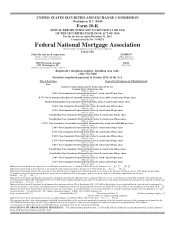 1
1 -
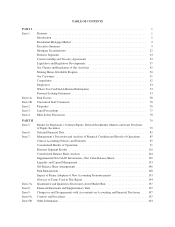 2
2 -
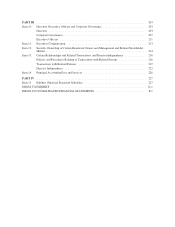 3
3 -
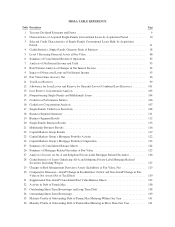 4
4 -
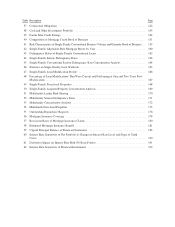 5
5 -
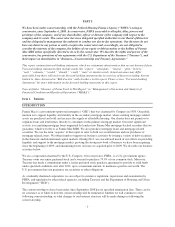 6
6 -
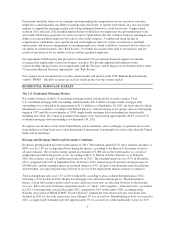 7
7 -
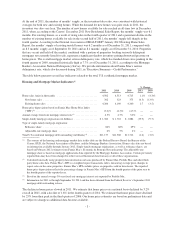 8
8 -
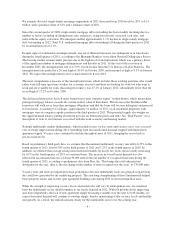 9
9 -
 10
10 -
 11
11 -
 12
12 -
 13
13 -
 14
14 -
 15
15 -
 16
16 -
 17
17 -
 18
18 -
 19
19 -
 20
20 -
 21
21 -
 22
22 -
 23
23 -
 24
24 -
 25
25 -
 26
26 -
 27
27 -
 28
28 -
 29
29 -
 30
30 -
 31
31 -
 32
32 -
 33
33 -
 34
34 -
 35
35 -
 36
36 -
 37
37 -
 38
38 -
 39
39 -
 40
40 -
 41
41 -
 42
42 -
 43
43 -
 44
44 -
 45
45 -
 46
46 -
 47
47 -
 48
48 -
 49
49 -
 50
50 -
 51
51 -
 52
52 -
 53
53 -
 54
54 -
 55
55 -
 56
56 -
 57
57 -
 58
58 -
 59
59 -
 60
60 -
 61
61 -
 62
62 -
 63
63 -
 64
64 -
 65
65 -
 66
66 -
 67
67 -
 68
68 -
 69
69 -
 70
70 -
 71
71 -
 72
72 -
 73
73 -
 74
74 -
 75
75 -
 76
76 -
 77
77 -
 78
78 -
 79
79 -
 80
80 -
 81
81 -
 82
82 -
 83
83 -
 84
84 -
 85
85 -
 86
86 -
 87
87 -
 88
88 -
 89
89 -
 90
90 -
 91
91 -
 92
92 -
 93
93 -
 94
94 -
 95
95 -
 96
96 -
 97
97 -
 98
98 -
 99
99 -
 100
100 -
 101
101 -
 102
102 -
 103
103 -
 104
104 -
 105
105 -
 106
106 -
 107
107 -
 108
108 -
 109
109 -
 110
110 -
 111
111 -
 112
112 -
 113
113 -
 114
114 -
 115
115 -
 116
116 -
 117
117 -
 118
118 -
 119
119 -
 120
120 -
 121
121 -
 122
122 -
 123
123 -
 124
124 -
 125
125 -
 126
126 -
 127
127 -
 128
128 -
 129
129 -
 130
130 -
 131
131 -
 132
132 -
 133
133 -
 134
134 -
 135
135 -
 136
136 -
 137
137 -
 138
138 -
 139
139 -
 140
140 -
 141
141 -
 142
142 -
 143
143 -
 144
144 -
 145
145 -
 146
146 -
 147
147 -
 148
148 -
 149
149 -
 150
150 -
 151
151 -
 152
152 -
 153
153 -
 154
154 -
 155
155 -
 156
156 -
 157
157 -
 158
158 -
 159
159 -
 160
160 -
 161
161 -
 162
162 -
 163
163 -
 164
164 -
 165
165 -
 166
166 -
 167
167 -
 168
168 -
 169
169 -
 170
170 -
 171
171 -
 172
172 -
 173
173 -
 174
174 -
 175
175 -
 176
176 -
 177
177 -
 178
178 -
 179
179 -
 180
180 -
 181
181 -
 182
182 -
 183
183 -
 184
184 -
 185
185 -
 186
186 -
 187
187 -
 188
188 -
 189
189 -
 190
190 -
 191
191 -
 192
192 -
 193
193 -
 194
194 -
 195
195 -
 196
196 -
 197
197 -
 198
198 -
 199
199 -
 200
200 -
 201
201 -
 202
202 -
 203
203 -
 204
204 -
 205
205 -
 206
206 -
 207
207 -
 208
208 -
 209
209 -
 210
210 -
 211
211 -
 212
212 -
 213
213 -
 214
214 -
 215
215 -
 216
216 -
 217
217 -
 218
218 -
 219
219 -
 220
220 -
 221
221 -
 222
222 -
 223
223 -
 224
224 -
 225
225 -
 226
226 -
 227
227 -
 228
228 -
 229
229 -
 230
230 -
 231
231 -
 232
232 -
 233
233 -
 234
234 -
 235
235 -
 236
236 -
 237
237 -
 238
238 -
 239
239 -
 240
240 -
 241
241 -
 242
242 -
 243
243 -
 244
244 -
 245
245 -
 246
246 -
 247
247 -
 248
248 -
 249
249 -
 250
250 -
 251
251 -
 252
252 -
 253
253 -
 254
254 -
 255
255 -
 256
256 -
 257
257 -
 258
258 -
 259
259 -
 260
260 -
 261
261 -
 262
262 -
 263
263 -
 264
264 -
 265
265 -
 266
266 -
 267
267 -
 268
268 -
 269
269 -
 270
270 -
 271
271 -
 272
272 -
 273
273 -
 274
274 -
 275
275 -
 276
276 -
 277
277 -
 278
278 -
 279
279 -
 280
280 -
 281
281 -
 282
282 -
 283
283 -
 284
284 -
 285
285 -
 286
286 -
 287
287 -
 288
288 -
 289
289 -
 290
290 -
 291
291 -
 292
292 -
 293
293 -
 294
294 -
 295
295 -
 296
296 -
 297
297 -
 298
298 -
 299
299 -
 300
300 -
 301
301 -
 302
302 -
 303
303 -
 304
304 -
 305
305 -
 306
306 -
 307
307 -
 308
308 -
 309
309 -
 310
310 -
 311
311 -
 312
312 -
 313
313 -
 314
314 -
 315
315 -
 316
316 -
 317
317 -
 318
318 -
 319
319 -
 320
320 -
 321
321 -
 322
322 -
 323
323 -
 324
324 -
 325
325 -
 326
326 -
 327
327 -
 328
328 -
 329
329 -
 330
330 -
 331
331 -
 332
332 -
 333
333 -
 334
334 -
 335
335 -
 336
336 -
 337
337 -
 338
338 -
 339
339 -
 340
340 -
 341
341 -
 342
342 -
 343
343 -
 344
344 -
 345
345 -
 346
346 -
 347
347 -
 348
348 -
 349
349 -
 350
350 -
 351
351 -
 352
352 -
 353
353 -
 354
354 -
 355
355 -
 356
356 -
 357
357 -
 358
358 -
 359
359 -
 360
360 -
 361
361 -
 362
362 -
 363
363 -
 364
364 -
 365
365 -
 366
366 -
 367
367 -
 368
368 -
 369
369 -
 370
370 -
 371
371 -
 372
372 -
 373
373 -
 374
374
 |
 |
markets and the deteriorated credit performance of loans in our mortgage credit book of business that we
acquired prior to 2009. In his February 2012 letter to Congress, Acting Director DeMarco wrote, “[I]t is clear that
the draws [Fannie Mae and Freddie Mac] have taken from the Treasury are so large they cannot be repaid under
any foreseeable scenarios.” As a result of our draws, we do not expect to earn profits in excess of our annual
dividend obligation to Treasury for the indefinite future.
There is significant uncertainty regarding the future of our company, including how long the company will
continue to exist in its current form. The Administration, Congress and our regulators are considering options for
the future state of Fannie Mae, Freddie Mac and the U.S. government’s role in residential mortgage finance. In
February 2011, Treasury and HUD released a report to Congress on reforming America’s housing finance
market. The report provides that the Administration will work with FHFA to determine the best way to
responsibly reduce Fannie Mae’s and Freddie Mac’s role in the market and ultimately wind down both
institutions. The report emphasizes the importance of proceeding with a careful transition plan and providing the
necessary financial support to Fannie Mae and Freddie Mac during the transition period. On February 2, 2012,
Treasury Secretary Geithner stated that the Administration intended to release new details around approaches to
housing finance reform, including winding down Fannie Mae and Freddie Mac, in the spring of 2012 and to work
with Congressional leaders to explore options for legislation, but that he does not expect housing finance reform
legislation to be enacted in 2012. In his February 2012 letter to Congress, Acting Director DeMarco states that
achieving the strategic goals for the next phase of conservatorship will “prepare the foundation for a new,
stronger housing finance system in the future. Although that future may not include Fannie Mae and Freddie
Mac, at least as they are known today, this important work in conservatorship can be a lasting, positive legacy for
the country and its housing system.” We discuss efforts to reform the GSEs and the housing finance system in
more detail in “Legislative and Regulatory Developments—GSE Reform.”
In 2011 we refined and began implementing a plan designed to support the creation of a sustainable housing
finance system by improving our business processes, infrastructure and organizational structure. We expect to
continue implementing the plan in phases with goals of providing value to our customers, simplifying and
standardizing our operating model, and reducing our costs.
To provide context for analyzing our consolidated financial statements and understanding our MD&A, we
discuss the following topics in this executive summary:
• Our provision of liquidity and support to the mortgage market;
• Our 2011 financial performance;
• Our strong new book of business and expected losses on loans we acquired prior to 2009;
• Our efforts to reduce losses on single-family loans we acquired prior to 2009, which we refer to as our
“legacy book of business”;
• Credit statistics for our single-family book of business;
• Our liquidity position; and
• Our outlook.
Providing Liquidity and Support to the Mortgage Market
Our Liquidity and Support Activities
We provide liquidity and support to the U.S. mortgage market in a number of important ways:
• We serve as a stable source of liquidity for purchases of homes and financing of multifamily rental housing,
as well as for refinancing existing mortgages. We provided approximately $2.3 trillion in liquidity to the
mortgage market in 2009 through 2011 through our purchases and guarantees of loans, which enabled
homeowners to refinance 6.6 million mortgages, 1.9 million households to purchase a home, and financing
for over 1.1 million units of multifamily housing.
• We are a consistent market presence as we continue to provide liquidity to the mortgage market even when
other sources of capital have exited the market, as has been shown repeatedly over the last few years. We
-6-
